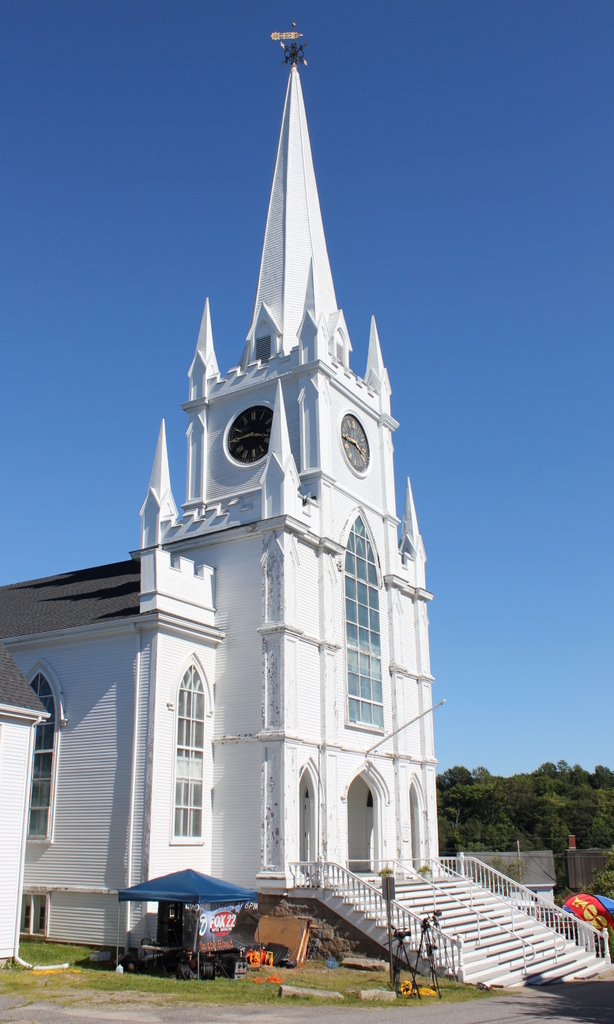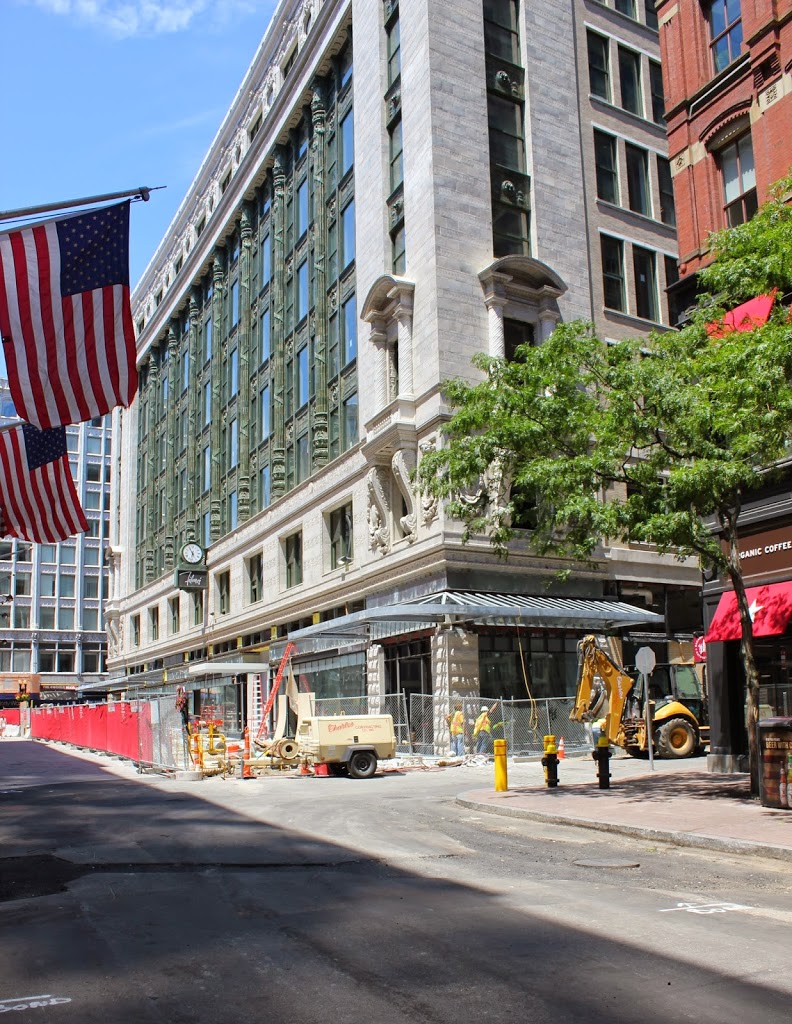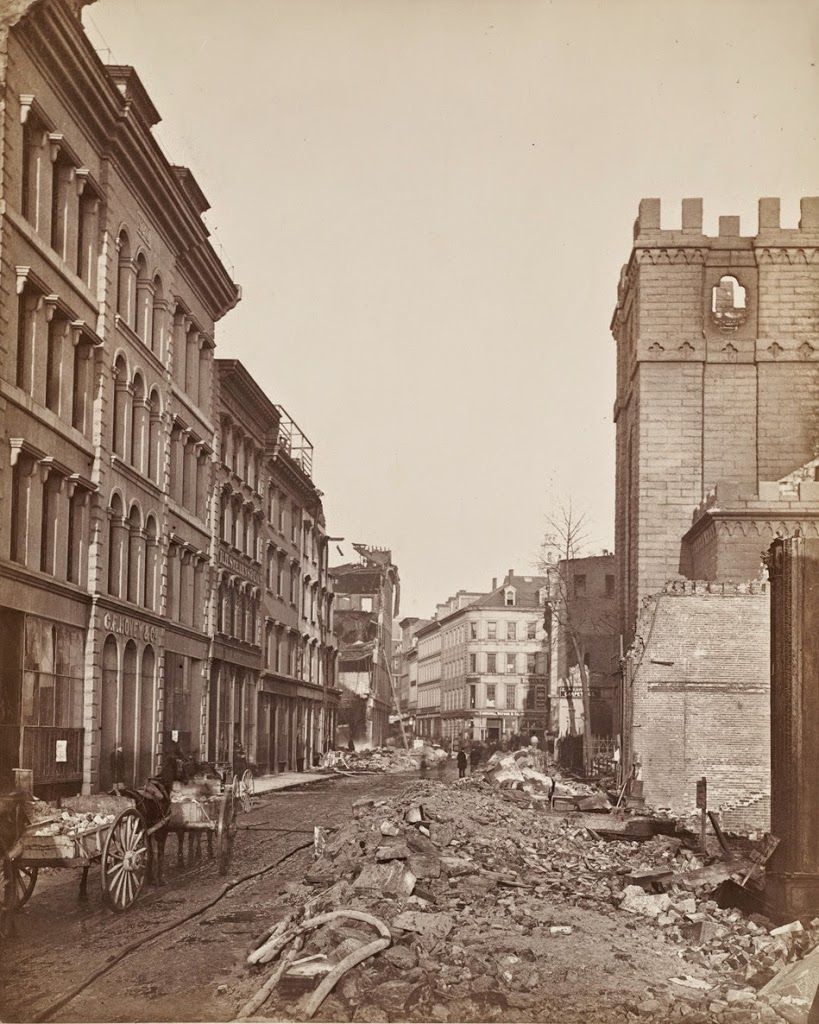Another view of the Methodist Church on Main Street in Monson, around 1900-1920. Image courtesy of the Monson Free Library.
The church in 2015:

As explained in the previous post, this church at the corner of Main and Cushman Streets was built in 1850, and it is the oldest of Monson’s four church buildings. The only major change in the church’s appearance between the two photos is the steeple. The top of the steeple above the belfry was removed in 1952 because of damage caused by the 1938 hurricane, and it was replaced in 2010. Aside from that, though, the rest of the historic church is essentially unchanged, and it is an excellent example of mid 19th century New England church architecture.












